-
 Bitcoin
Bitcoin $106,782.3966
-0.72% -
 Ethereum
Ethereum $2,406.7764
-1.16% -
 Tether USDt
Tether USDt $1.0005
0.02% -
 XRP
XRP $2.0918
-1.53% -
 BNB
BNB $644.5785
-0.17% -
 Solana
Solana $141.0925
-0.69% -
 USDC
USDC $1.0000
0.02% -
 TRON
TRON $0.2721
0.18% -
 Dogecoin
Dogecoin $0.1585
-1.26% -
 Cardano
Cardano $0.5497
-1.14% -
 Hyperliquid
Hyperliquid $35.8493
-1.58% -
 Bitcoin Cash
Bitcoin Cash $502.3089
2.20% -
 Sui
Sui $2.7092
3.87% -
 Chainlink
Chainlink $12.8551
-1.85% -
 UNUS SED LEO
UNUS SED LEO $9.0548
0.53% -
 Stellar
Stellar $0.2344
-0.85% -
 Avalanche
Avalanche $17.2676
-0.23% -
 Toncoin
Toncoin $2.8282
0.56% -
 Shiba Inu
Shiba Inu $0.0...01113
-1.14% -
 Litecoin
Litecoin $83.9593
-0.93% -
 Hedera
Hedera $0.1447
0.82% -
 Monero
Monero $306.9022
-2.07% -
 Bitget Token
Bitget Token $4.6358
3.42% -
 Dai
Dai $0.9999
0.01% -
 Ethena USDe
Ethena USDe $1.0001
0.02% -
 Polkadot
Polkadot $3.3211
0.06% -
 Uniswap
Uniswap $6.8775
0.75% -
 Pi
Pi $0.5664
-0.27% -
 Aave
Aave $256.0055
1.28% -
 Pepe
Pepe $0.0...09013
-3.24%
Bitcoin Mining Tutorial for Beginners
Before venturing into Bitcoin mining, it's imperative to familiarize oneself with the basics of the cryptocurrency and its decentralized blockchain network.
Jan 09, 2025 at 01:44 pm

Bitcoin Mining Tutorial for Beginners: A Comprehensive Guide to Understanding the Process
Key Points:
- Step 1: Get to know the basics of Bitcoin
- Step 2: Choosing a Bitcoin Mining Hardware
- Step 3: Choosing a Mining Pool
- Step 4: Setting Up Your Mining Software
- Step 5: Setting Up Your Mining Rig
- Step 6: Start Mining Bitcoin
- Step 7: Monitoring and Maintaining Your Mining Operation
- Step 8: Troubleshooting Common Bitcoin Mining Issues
Step 1: Get to know the basics of Bitcoin
Before you delve into mining Bitcoin, it's crucial to familiarize yourself with the basics of the cryptocurrency. Bitcoin is a decentralized digital currency that operates on a blockchain network. This means there's no central authority or bank controlling its issuance or transactions. Instead, the Bitcoin network is maintained by a vast network of computers spread across the globe.
Step 2: Choosing a Bitcoin Mining Hardware
There are different types of Bitcoin mining hardware available, each with its unique characteristics. The most popular types include:
- ASICs (Application-Specific Integrated Circuits): These specialized computers are designed specifically for Bitcoin mining and offer the highest hash rates.
- GPUs (Graphics Processing Units): GPUs are commonly used for gaming and can also be utilized for Bitcoin mining. They offer less hash rate than ASICs but are more affordable.
- CPUs (Central Processing Units): CPUs are the processors found in most computers. While they can be used for Bitcoin mining, they have the lowest hash rate and are not recommended for serious miners.
Step 3: Choosing a Mining Pool
Mining pools are groups of miners who combine their resources to increase their chances of finding a block and earning rewards. Joining a mining pool allows you to receive regular payouts based on the pool's performance, even if you don't find a block yourself.
When choosing a mining pool, consider factors such as:
- Pool Fees: Pools charge fees for their services, which vary widely.
- Pool Hash Rate: This indicates the computational power of the pool and influences your chances of finding a block.
- Pool Reputation: Select pools with a solid reputation and a proven track record.
Step 4: Setting Up Your Mining Software
Mining software communicates with the Bitcoin blockchain network and controls the mining hardware. There are various mining software options available, such as:
- CGMiner: A popular and user-friendly mining software compatible with different hardware options.
- BFGMiner: An efficient and feature-rich mining software specifically designed for ASIC miners.
- MinerGate: A cloud mining service that enables you to mine Bitcoin without owning hardware.
Step 5: Setting Up Your Mining Rig
After selecting your mining hardware and software, it's time to set up your mining rig. This typically involves:
- Configuring Your Hardware: Connect your mining hardware to your computer and install the necessary drivers.
- Installing Cooling Systems: Bitcoin mining can generate heat, so ensure proper cooling mechanisms are in place to prevent overheating.
- Connecting to the Mining Pool: Use the mining software to configure your rig to connect to the chosen mining pool.
Step 6: Start Mining Bitcoin
With your mining rig set up, you can now start mining Bitcoin. The mining process involves solving complex mathematical problems to verify Bitcoin transactions. When a miner finds a solution, they receive a block reward in the form of Bitcoin.
Step 7: Monitoring and Maintaining Your Mining Operation
Once your mining operation is up and running, it's essential to monitor and maintain it to ensure optimal performance. This includes:
- Monitoring Hash Rate: Regularly check your hash rate to ensure it's consistent and within expected ranges.
- Maintaining Hardware: Keep your mining hardware clean and well-ventilated to prevent overheating and extend its lifespan.
- Updating Software: Ensure your mining software and drivers are up to date for optimal performance and security.
Step 8: Troubleshooting Common Bitcoin Mining Issues
Like any complex hardware or software setup, Bitcoin mining can encounter issues. Some common problems and their solutions include:
- Low Hash Rate: Check hardware connections, update drivers, and ensure adequate cooling.
- Hardware Overheating: Improve ventilation, clean the hardware, and adjust clock speeds if necessary.
- Pool Connection Errors: Check internet connectivity, verify pool server settings, and restart the mining software.
FAQs
Q: Is Bitcoin mining profitable?
A: The profitability of Bitcoin mining depends on several factors, including the price of Bitcoin, mining difficulty, and electricity costs. While Bitcoin mining can be profitable, it's important to carefully consider these factors before investing in hardware and electricity.
Q: What is the difficulty of mining Bitcoin?
A: The Bitcoin network automatically adjusts its mining difficulty based on the hashrate, ensuring that it takes approximately 10 minutes on average to find a block. The difficulty increases as more miners join the network.
Q: What is a Bitcoin mining pool?
A: A Bitcoin mining pool is a group of miners who combine their resources, sharing workload and rewards based on their contribution to the pool's hashrate. Joining a mining pool reduces the time it takes to find a block compared to solo mining.
Q: How much does it cost to mine Bitcoin?
A: The cost of mining Bitcoin includes the cost of hardware, electricity, and pool fees. The cost of hardware varies depending on the type and efficiency of the mining rig, while electricity costs depend on the location and electricity rates. Pool fees typically range from 1% to 5%.
Disclaimer:info@kdj.com
The information provided is not trading advice. kdj.com does not assume any responsibility for any investments made based on the information provided in this article. Cryptocurrencies are highly volatile and it is highly recommended that you invest with caution after thorough research!
If you believe that the content used on this website infringes your copyright, please contact us immediately (info@kdj.com) and we will delete it promptly.
- Bitcoin, Stablecoins, and Treasuries: A New Era of Digital Finance
- 2025-06-28 04:50:12
- GoMining: Gamified NFTs and the Future of Bitcoin Mining
- 2025-06-28 04:30:12
- Bitcoin Price, Speculative Urgency, and Midterm Pain: A New Yorker's Take
- 2025-06-28 04:55:12
- Crypto Investors Beware: IRS Cracks Down on Tax Compliance
- 2025-06-28 04:57:13
- Fridge Cigarettes, Gen Z, and the New Addiction: Diet Coke?
- 2025-06-28 04:35:11
- Sonic, Magic Gathering, and July 2025: What's Trending?
- 2025-06-28 02:30:12
Related knowledge
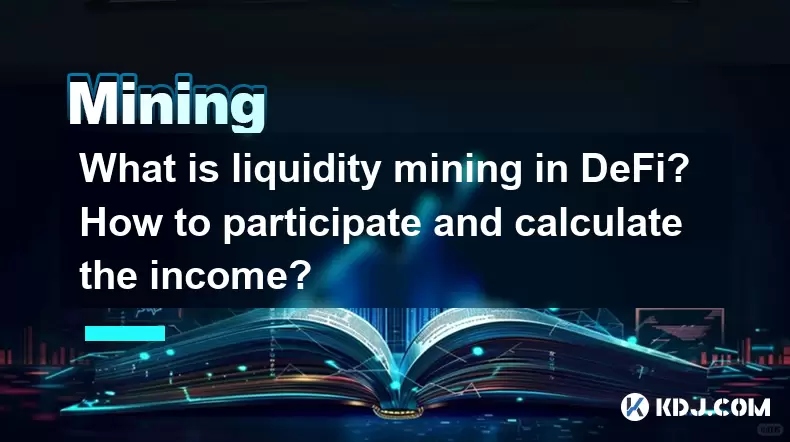
What is liquidity mining in DeFi? How to participate and calculate the income?
Jun 20,2025 at 03:21pm
Understanding Liquidity Mining in DeFiLiquidity mining is a core concept in the decentralized finance (DeFi) ecosystem that allows users to earn rewards by providing liquidity to decentralized exchanges (DEXs) or lending platforms. In traditional finance, liquidity providers are usually institutional players, but DeFi democratizes this process, enabling...
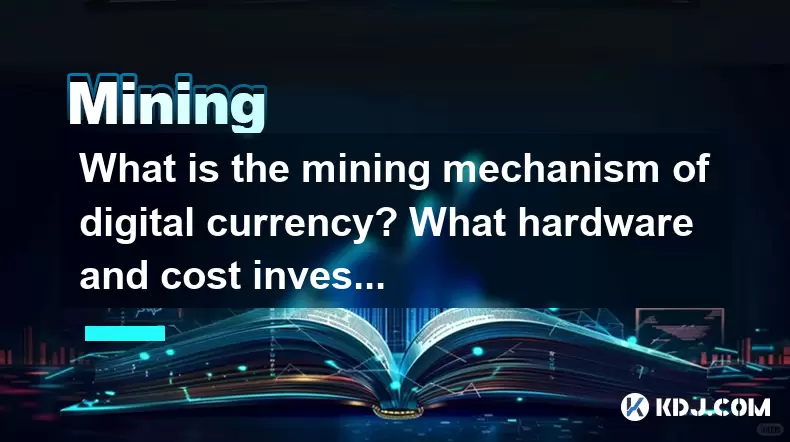
What is the mining mechanism of digital currency? What hardware and cost investment are required?
Jun 23,2025 at 06:29am
Understanding the Mining Mechanism of Digital CurrencyThe mining mechanism of digital currency is a foundational process that ensures transaction validation and network security. In most Proof-of-Work (PoW) cryptocurrencies like Bitcoin, miners compete to solve complex mathematical puzzles using computational power. The first miner to find a valid solut...
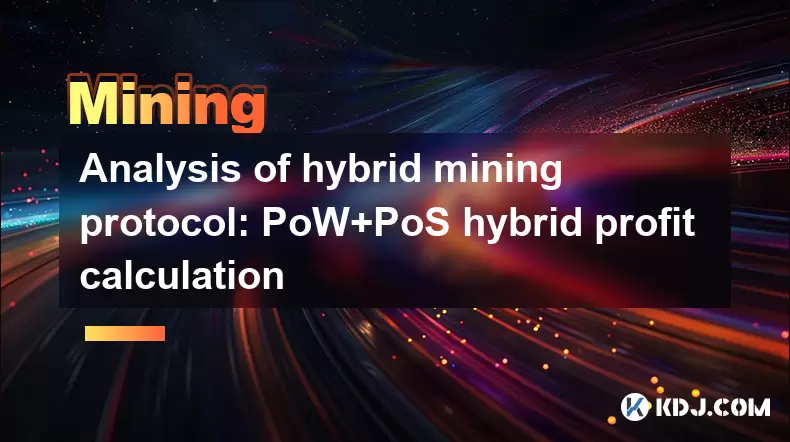
Analysis of hybrid mining protocol: PoW+PoS hybrid profit calculation
Jun 23,2025 at 10:15am
Understanding Hybrid Mining ProtocolsIn the realm of blockchain technology, consensus mechanisms are pivotal in maintaining network integrity and transaction validation. A hybrid mining protocol combines two or more consensus algorithms to achieve a balance between security, decentralization, and energy efficiency. The most commonly adopted hybrid model...

How to operate option mining? Hedging strategy and profit structure
Jun 21,2025 at 03:29pm
What is Option Mining?Option mining refers to a decentralized finance (DeFi) strategy where participants provide liquidity or take specific derivative positions in options protocols to earn rewards. Unlike traditional yield farming, option mining often involves liquidity provision for options markets, allowing users to generate returns through premiums ...
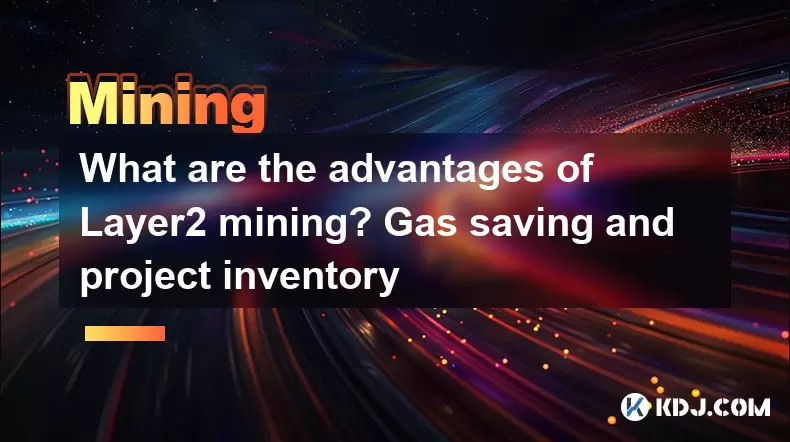
What are the advantages of Layer2 mining? Gas saving and project inventory
Jun 20,2025 at 04:50am
Understanding Layer2 Mining and Its SignificanceLayer2 mining refers to the process of participating in decentralized applications or protocols that operate on top of a primary blockchain (such as Ethereum) using scaling solutions like Optimism, Arbitrum, or zkSync. Unlike traditional mining on Layer1 blockchains, which often involves high computational...
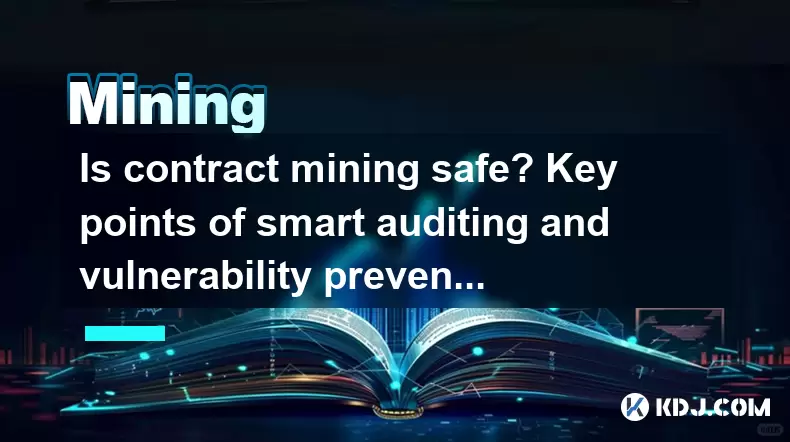
Is contract mining safe? Key points of smart auditing and vulnerability prevention
Jun 19,2025 at 08:08pm
Understanding Contract Mining in the Cryptocurrency SpaceContract mining refers to a method within blockchain ecosystems where users can participate in mining operations through smart contracts. Unlike traditional mining, which requires physical hardware and technical expertise, contract mining allows participants to invest funds into a mining pool or p...

What is liquidity mining in DeFi? How to participate and calculate the income?
Jun 20,2025 at 03:21pm
Understanding Liquidity Mining in DeFiLiquidity mining is a core concept in the decentralized finance (DeFi) ecosystem that allows users to earn rewards by providing liquidity to decentralized exchanges (DEXs) or lending platforms. In traditional finance, liquidity providers are usually institutional players, but DeFi democratizes this process, enabling...

What is the mining mechanism of digital currency? What hardware and cost investment are required?
Jun 23,2025 at 06:29am
Understanding the Mining Mechanism of Digital CurrencyThe mining mechanism of digital currency is a foundational process that ensures transaction validation and network security. In most Proof-of-Work (PoW) cryptocurrencies like Bitcoin, miners compete to solve complex mathematical puzzles using computational power. The first miner to find a valid solut...

Analysis of hybrid mining protocol: PoW+PoS hybrid profit calculation
Jun 23,2025 at 10:15am
Understanding Hybrid Mining ProtocolsIn the realm of blockchain technology, consensus mechanisms are pivotal in maintaining network integrity and transaction validation. A hybrid mining protocol combines two or more consensus algorithms to achieve a balance between security, decentralization, and energy efficiency. The most commonly adopted hybrid model...

How to operate option mining? Hedging strategy and profit structure
Jun 21,2025 at 03:29pm
What is Option Mining?Option mining refers to a decentralized finance (DeFi) strategy where participants provide liquidity or take specific derivative positions in options protocols to earn rewards. Unlike traditional yield farming, option mining often involves liquidity provision for options markets, allowing users to generate returns through premiums ...

What are the advantages of Layer2 mining? Gas saving and project inventory
Jun 20,2025 at 04:50am
Understanding Layer2 Mining and Its SignificanceLayer2 mining refers to the process of participating in decentralized applications or protocols that operate on top of a primary blockchain (such as Ethereum) using scaling solutions like Optimism, Arbitrum, or zkSync. Unlike traditional mining on Layer1 blockchains, which often involves high computational...

Is contract mining safe? Key points of smart auditing and vulnerability prevention
Jun 19,2025 at 08:08pm
Understanding Contract Mining in the Cryptocurrency SpaceContract mining refers to a method within blockchain ecosystems where users can participate in mining operations through smart contracts. Unlike traditional mining, which requires physical hardware and technical expertise, contract mining allows participants to invest funds into a mining pool or p...
See all articles























































































